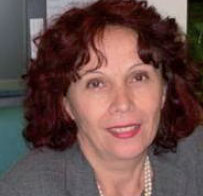Genoveffa Franchini

Dr. Genoveffa Franchini received her M.D. in 1977 from the University of Modena, Italy, and is the chief of the Animal Models&Retroviral Vaccines Section of the National Cancer Institute, USA. She is a world-renowned retrovirologist who has pioneered research on oncogenes and human retroviruses. Dr. Franchini has made significant achievements in retrovirology and translational approaches to prevent human retroviral infections. She has furthered the understanding of HTLV-1 pathogenesis, characterized new viral genes, and explored (Nature 2004) the affect of the host immune response (Nature 2010). Her interest in immunological mechanisms has bettered the understanding of vaccine protection, particularly in the SIV macaque model. Her accomplishments in HIV vaccine development have secured patent rights to the US Government on the use of poxvirus vectors alone or in combination with DNA. One of the vaccines developed and tested in Dr. Franchini's laboratory is in clinical trials in 16,000 volunteers in Thailand. Dr. Franchini's laboratory genetically characterized SIV (Nature 1987) and defined the regulatory function of HIV-1/2 and SIV genes (Science 1986, 1990). She first demonstrated the importance of Vpr in HIV-1 infectivity in macrophages (PNAS, 1990) and the SIV fusion peptide (Science, 1989). Her work in immunological mechanisms furthered the understanding of vaccine efficacy and protection (Nature Medicine, 2005). In the therapeutic arena, Dr. Franchini provided the first proof of principle that vaccination provides transient benefit to SIV-infected macaques (Nature Medicine, 2001), and she pioneered strategies to down-modulate regulators of immune response in HIV-1-infected individuals.
Oncogenic retrovirus, chronic infection and cancer: Viral strategies that favor viral persistence in humans
Human T-cell leukemia/Lymphoma virus type 1(HTLV-1) infects about twenty million people worldwide. HTLV-1 is more frequent in some area of the world; for example 1% of the inhabitants of Kyushu, an island of Japan, are infected by HTLV-1.The virus was first isolated in the late Seventies at the National Cancer Institute from a patient that had Adult T-cell leukemia/Lymphoma (ATLL). HTLV-1 causes not only ATLL but also a neurological disease that results in paralysis of the lower limbs, designated Tropical Spastic Parapharesis/ HTLV-1 associated Myelopathy(TSP/HAM). However, disease occurs only in approximately 2% of the infected individuals in their life time. HTLV-1 is the first oncogenic retrovirus found in humans. Like the other known human retroviruses, such as the Human Immune Deficiency Virus type 1 and 2(HIV-1 and HIV-2) that cause Acquired Immune Deficiency (AIDS),HTLV-1 has a complex genome that encodes several structural and non structural proteins. HTLV-1 associated oncogenicity does not appear to be due to insertional mutagenesis. Rather, the expression of viral proteins in the virus-infected T- cells increases their survival and their ability to escape immune recognition. A current hypothesis for HTL1 leukemogenesis is that HTLV-1, by prolonging the life of the infected T-cells, may favor the accumulation of genetic lesions that ultimately cause the uncontrolled growth of T-cell and leukemia. Thus, the identification of the viral genetic determinant that prolong the life of the infected T-cells and favors viral persistence is important because it may provide several targets to inhibit virus spreading in the host and the subsequent cancer development.





